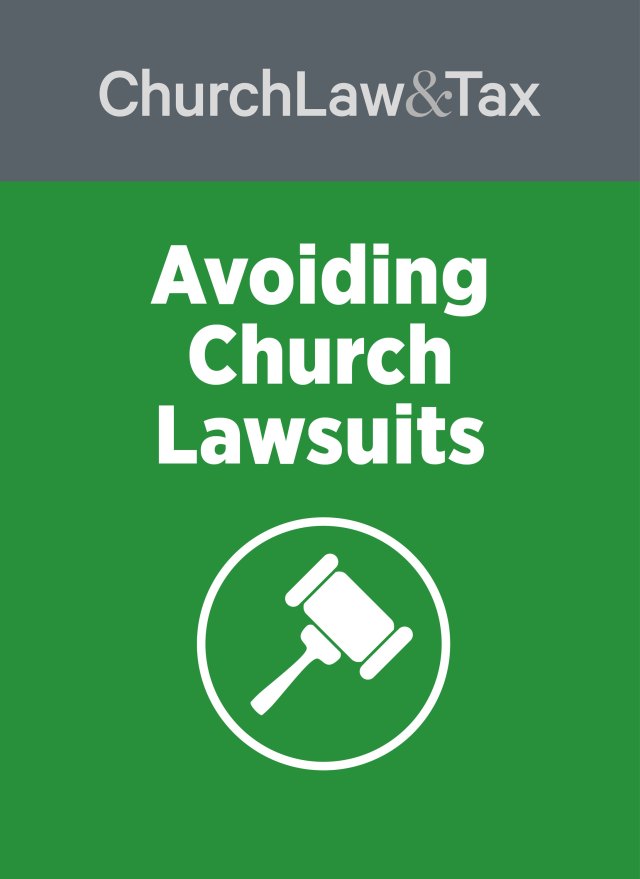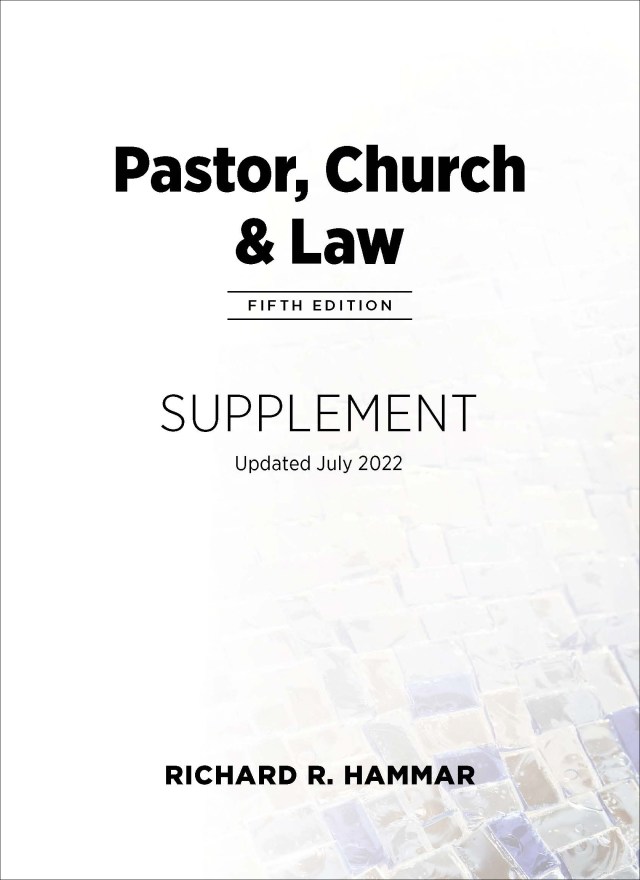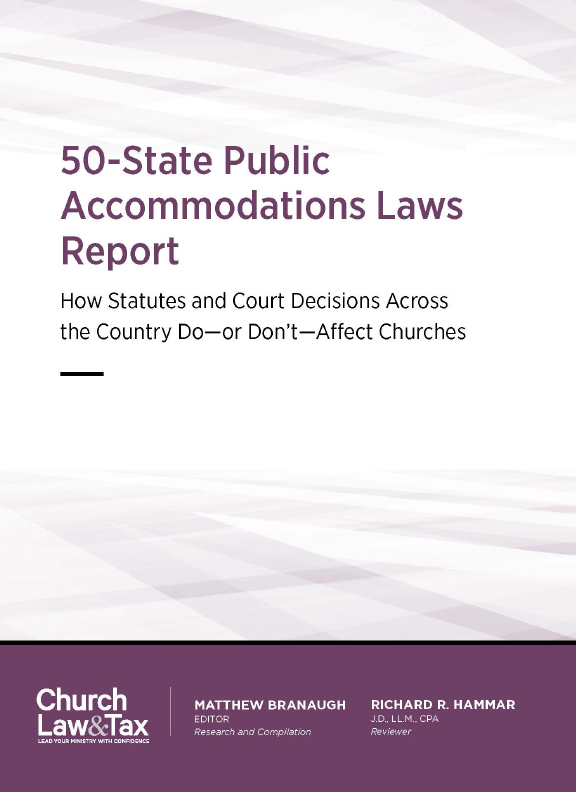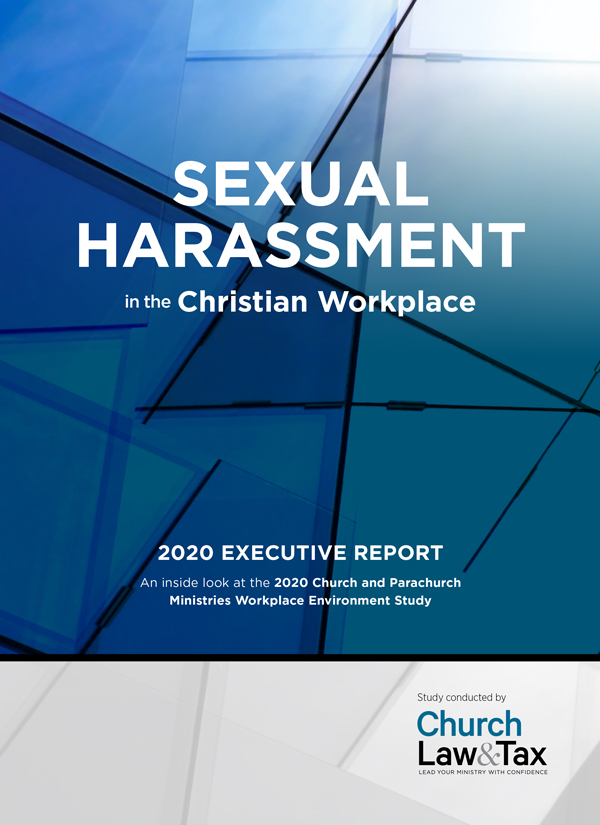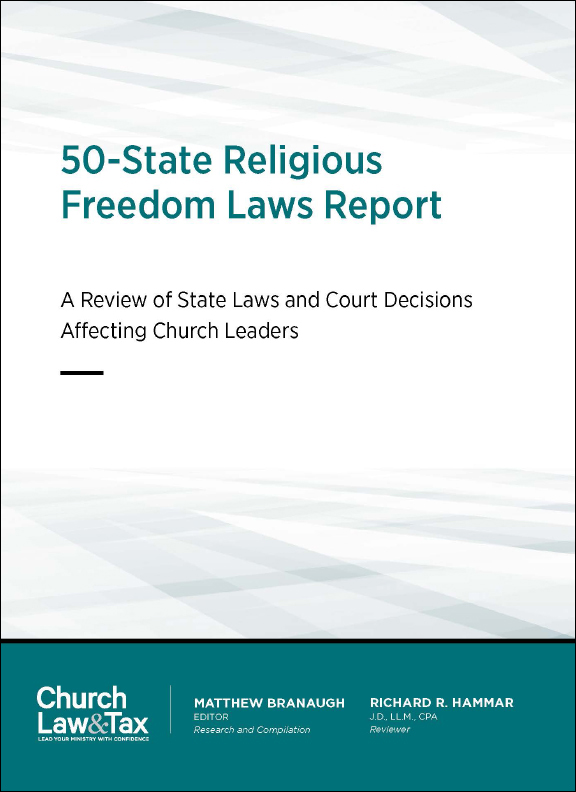COVID-19 has left an indelible mark on congregational life and the practice of ministry. Many pastors and other church leaders wonder if things will get back to “normal,” or if we have entered a new era with long-term implications for church programs—ranging from worship services to caring for children in the church nursery.
No one has been left unaffected. As we move forward, the weight of these experiences will continue to influence church members in different ways. Some will be anxious to return to pre-pandemic church life. Others will be guarded and hesitant, concerned about their safety and the safety of loved ones.
That mix of desire and uncertainty, of hope and fear, is further complicated by new variants of the virus and new information about the pandemic that changes from one week to the next, sometimes in contradictory ways.
In essence, church leaders now face the transition from pandemic ministry to post-pandemic ministry within an environment deeply affecting people emotionally, spiritually, physically, and financially.
Yet glimmers of hope also exist. People are getting vaccinated. Government restrictions are easing.
Rather than stand by as passive observers, church leaders should address the health concerns and fears that church members might have concerning the reentry into congregational life.
This article addresses four key areas that can play a role in shaping the journey forward: (1) understand health risks that affect churches; (2) identify practices to reduce risks of infection and the transmission of disease within church programs and facilities; (3) establish a church safety and health team to oversee implementation of the church’s health guidelines; and (4) develop a training and communication strategy that reinforces health practices.
Understand health risks that affect churches
Basic health risks and infectious diseases that arise in church life are not new and commonly occur throughout society. One difference, though, is that church facilities and programs can represent higher levels of risk of infection than other settings involving groups of people.
This is true for two reasons.
One, the typical congregation encompasses a many age groups ranging from infants to the elderly. As a result, some of these individuals are among the most vulnerable with respect to infectious diseases.
And two, churches engender close contact, including shaking hands, hugging, touching shared surfaces (such as offering plates, bulletins, hymnals, pews, door handles, communion trays, coffee pots, and the list goes on). And this is before adding in programs for children—from changing diapers in the church nursery to toddlers sharing slobbery toys.
Every age group poses unique health challenges. Of course, these realities have been present for generations, and they haven’t had a dramatic impact on congregational life, so why the concern now? The answer is simple: COVID-19.
While most people who attend church may not worry about catching a cold or even getting the flu, COVID-19 represents a different level of risk. And most importantly, the same health precautions that reduce the risk of infection from COVID-19 also reduce the risk of most other infectious diseases a person could acquire at a church event.
Thus, a church’s response to COVID-19 lays the foundation for a broader, more intentional strategy to promote healthy practices many people will be concerned about before attending church programs.
Furthermore, the focus is not on developing a complex set of health guidelines in response to COVID-19. Rather, the focus should be zeroing in on two common practices that require diligence and prove very effective with preventing COVID-19 and numerous other ailments: handwashing and covering coughs and sneezes.
Identify practices to reduce risks of infection and the transmission of disease
The most common means of transmitting an infectious disease is through direct contact, typically with the hands. Disease can also be spread through airborne respiratory droplets. Reducing the risks in these two areas should play a prominent role in developing health guidelines for your church.
Reduce risk on surfaces
Let’s start with a simple threefold practice that will benefit every church: clean, sanitize, and disinfect. Cleaners remove dirt and particles, typically with soap and water or some other cleaner. Sanitizers reduce germs from surfaces and are often used in laundry products. Disinfectants kill or inactivate bacteria and viruses on hard, nonporous surfaces, such as counters and door handles.
To be successful, your church needs a checklist of what to clean, what to sanitize, and what to disinfect. In some cases, a janitor can do many of these tasks. But some will require the help of church volunteer workers, such as ushers and teachers.
Prior to the pandemic, the focus was on cleaning efforts typically comprised of traditional janitorial services, such as mopping floors or vacuuming rugs. In the “new normal,” sanitizing and disinfecting should become part of the routine health care that exists within the church. Attention must be given not simply to wiping door handles with a damp rag, but on using a disinfecting agent, such as a wipe or spray.
Keep no-touch wastebaskets near latched restroom doors so people can use a paper towel to open the door handle and then discard the paper into the wastebasket.
Lastly, develop a daily, weekly, and monthly schedule for your church’s cleaning, sanitizing, and disinfecting routines.
Handwashing
In addition to cleaning, sanitizing, and disinfecting surfaces, attention should be given to proper hand-washing techniques. Children especially should be shown how to wash their hands. Posters illustrating proper technique should be placed at all sinks used by children, teenagers, and adults. Free posters can be found online from the Centers for Disease Control and Prevention (CDC) as well as other sites (see resources below).
Church nurseries
Church nurseries require special attention and staff training. If your church operates a licensed daycare or preschool, you will be subject to county and state health requirements regarding the operation of those programs. Whether or not your church nursery is covered by such regulations may vary from state to state. Make sure you meet any existing requirements.
In many churches, nurseries are staffed using volunteer workers who lack specific training on health procedures. As a result, health practices can become inconsistent based on the knowledge and experience of the volunteer. Minimally, attention should be given to the following areas:
- Make sure all surfaces have been sanitized or disinfected. Do not use toys, objects, or supplies that cannot be sanitized. If an object or toy becomes contaminated, set it aside until it can be cleaned.
- Develop a standard procedure for transferring the child from the caregiver to the nursery worker. This should include a brief conversation with the parent or caregiver when the child arrives that clarifies if the child is suffering from any illness or injury. Also ask when the child last used the toilet, which can indicate if the child’s hands need to be washed and helps the worker anticipate restroom needs.
- If possible, keep children 3 years and younger separated from older children. Infants 12 months and younger are at the highest risk for infectious respiratory tract diseases.
- Change diapers in a designated location, preferably within reach of a sink, and always wash hands before and after, even if gloves are used.
- Implement handwashing procedures. All children should be taught proper handwashing techniques using soap and water, which reduces the likelihood of colds and diarrhea. If children share objects, such as art supplies, toys, or books, they should wash their hands before and after use.
Reduce airbone risks
Prior to the release of the COVID-19 vaccines, the two primary strategies to reduce the transmission of the virus involved social distancing and wearing masks. That’s because coughing and sneezing can lead to the transmission of COVID-19, just as it does with a variety of other illnesses, such as flu, strep throat, whooping cough, and respiratory syncytial virus.
In some states, the transition away from wearing masks has already begun. Soon, church leaders will face decisions on whether to maintain social distancing protocols and the use of masks in worship and other church programs.
From a health perspective, the best course of action is to rely upon guidance from the CDC and other qualified health organizations. Even so, this transition will not happen quickly, and some individuals are likely to wear masks for the foreseeable future, some out of fear, others out of caution or respect for the health and safety of those around them.
Church leaders who demonstrate awareness of these concerns and take steps to maintain safe environments can reduce the turbulence of eventually returning to services without masks. How this process unfolds will vary from one congregation to the next. But one thing that remain consistent, regardless of church size or location, is an effort to reduce the transmission of respiratory diseases that are spread by coughing and sneezing—the underlying reason for social distancing and the wearing masks in the first place.
There are other methods for reducing the transmission of COVID-19 besides mask-wearing. In many cases, a person may be asymptomatic and unaware that they represent a health risk to others. Encouraging cough and sneezing etiquette is a simple, but important, way for churches to promote safe health practices.
Covering one’s mouth with a tissue when coughing or sneezing may help. If a tissue is not available, people should cough into their elbow, avoiding the hands.
Most illnesses found in childcare settings, such as a church nursery, preschool, or daycare, are associated with respiratory symptoms. Plus, when a child becomes ill, it can have a financial impact on the family if a parent misses work to provide care.
Catching a cold is bad enough, but for some individuals within a church, such as infants, the elderly, and individuals with impaired immune systems, a cough or sneeze could transmit a life-threatening illness, especially during flu season.
Key point. Church leaders should consider working with their county public health agency to sponsor a vaccination day at the church during flu season.
Key point. When weather permits, having windows open provides access to fresh air and improves ventilation, reducing the risk of airborne transmission of germs. However, only open windows that do not pose a safety risk. Also, take into account people who have allergies or asthma
Form a safety and health team
The success of your health program will depend on leadership. Identifying and recruiting leaders to serve on a health and safety team is a crucial step in establishing a viable program.
Considering the nature of the COVID-19 pandemic and the impact it has had on individuals, families, and entire congregations, chances are good that your church has members who care deeply about these health and safety concerns, and who will make good team members.
The team should oversee training, communication, maintenance of sanitizing and disinfecting supplies, and completion of safety tasks. Some of these tasks may be incorporated into custodial care. (For smaller churches, one individual may be adequate to coordinate or perform key tasks.)
Develop a training and communication strategy
Once leaders have been recruited, tasks identified, and schedules set (such as for routine cleaning), focus should be placed upon training church workers on appropriate health and safety procedures. The article A Coronavirus Response Plan for Churches will help your church’s leadership respond to COVID-19, including the deployment of a response team.
Train staff
Key volunteers to train include ushers, greeters, nursery workers, and individuals who serve as group leaders or teachers in educational programs. Conduct training at least annually and cover all areas of touching and respiratory concerns, as well as first aid. To a large degree, the church will be dependent upon these individuals to carry out key tasks.
For example, for worship services, a church might expand the duties of ushers or greeters to include disinfecting door handles, pews, and other high-touch surfaces prior to services.
Teachers could fulfill these tasks in their own classrooms. Special attention should be given to the training of nursery workers since the care of infants and toddlers includes multiple health and safety concerns. All volunteers should be provided written guidelines and checklists. In addition, all cleaning supplies should be stored safely and out of the reach of children.
Communicate best practices to members and visitors
Along with training staff, you need to also communicate health and safety practices to congregational members and visitors. The goal is to establish routine patterns of behavior to reduce the transmission of infectious diseases that occur through touching and/or respiration, primarily coughing and sneezing.
In sustaining healthy practices, your congregation will benefit from a broad communication strategy that focuses on two areas: (a) handwashing and (b) covering sneezes and coughs. While it may sound simplistic, handwashing and covering sneezes and coughs are frontline strategies in the prevention of infectious diseases. Special attention should be given to these practices during flu season.
Posters reminding people to wash their hands should be placed in every restroom. All children and teenagers should be instructed on proper handwashing techniques as well as covering coughs and sneezes (see above).
Hand sanitizer stations can be positioned near entrances, exits, kitchens, gymnasiums, and other key locations where people congregate. Children under 24 months should not use hand sanitizers, and older children should be supervised during use. Tissue boxes can be placed in restrooms and on church pews.
Make use of the church website, newsletter, bulletin, and pulpit announcements to reinforce these practices. Create and distribute a brochure to all members and visitors that describes the church’s health guidelines for adults and children. Repetition of these messages will help make safe practices the norm. In addition, encourage people to stay home when they are feeling ill. Members and visitors will be appreciative of the church’s efforts to provide a safe environment.
The goal is to establish routine patterns of behavior to reduce the transmission of infectious diseases that occur through touching and/or respiration, primarily coughing and sneezing.
Post-transition fears
How churches transition into a post-pandemic world is not completely clear. For example, passing offering plates during services has been discouraged during the pandemic. Should churches resume this practice once the pandemic ends? What about passing communion trays? Or instructing members to greet one another during the service? Or congregational singing and choirs?
Many of these practices have been part of church life for generations. While some members won’t give a second thought to passing an offering plate or communion tray, others may feel uncomfortable.
The reality is that for over one year we have been inundated with messages about the deadly nature of COVID-19 and that has a psychological impact regarding health risk. Hundreds of thousands of people have seen loved ones die, jobs have been lost, businesses have struggled. The pandemic has created different levels of fear within people, and those fears are not going to disappear immediately.
No one can say with certainty how or when a congregation should restart practices that were suspended during the pandemic, but leaders would be wise to take the fears and concerns of congregants and visitors into account as they make decisions about moving forward.
Resources
The following will further aid your church’s efforts to guide the congregation into the post-pandemic world and beyond:
- A Coronavirus Response Plan for Churches. Learn more about legal considerations associated with hosting a vaccination clinic at your church, whether for COVID-19 or beyond.
- Reopening Guidance Currently Available by State. Compiled by the US Department of Health and Human Services, this document provides a link to each state’s guidelines to assist faith communities and other organizations in their response to the COVID-19 pandemic.
- Coughing and Sneezing. Guidance from the CDC on how to encourage proper coughing and sneezing etiquette by members of your congregation.
- Caring for Our Children, Fourth Edition: National Health and Safety Performance Standards Guidelines for Early Care and Education Programs. A joint collaborative project of the American Academy of Pediatrics, the American Public Health Association, and the National Resource Center for Health and Safety in Child Care and Early Education at the University of Colorado College of Nursing. This publication contains updated guidelines on the development and evaluation of the health and safety of children in all types of early care and education settings.
- Cleaning and Disinfecting Your Facility. A guide provided by the Centers for Disease Control.
- Handwashing: Clean Hands Save Lives. These printable posters, downloadable from the CDC’s website, can be used to help raise awareness about handwashing in highly visible public areas, such as schools, workplaces, and restrooms. They are designed for all audiences, and some are available in multiple sizes and languages. All can be ordered for free via CDC-Info on Demand.
- Considerations for Communities of Faith. The CDC offers general considerations to help communities of faith discern how best to practice their beliefs while keeping their staff and congregations safe.
- Operating schools during COVID-19: CDC’s Considerations. While the article from the CDC focuses upon schools, it provides helpful takeaways for churches.
- Prevention and Control of Communicable Diseases: A Guide for School Administrators, Nurses, Teachers, Child Care Providers, and Parents or Guardians. This handbook, prepared by the State of Missouri’s Bureau of Communicable Disease Control and Prevention, provides comprehensive and practic

